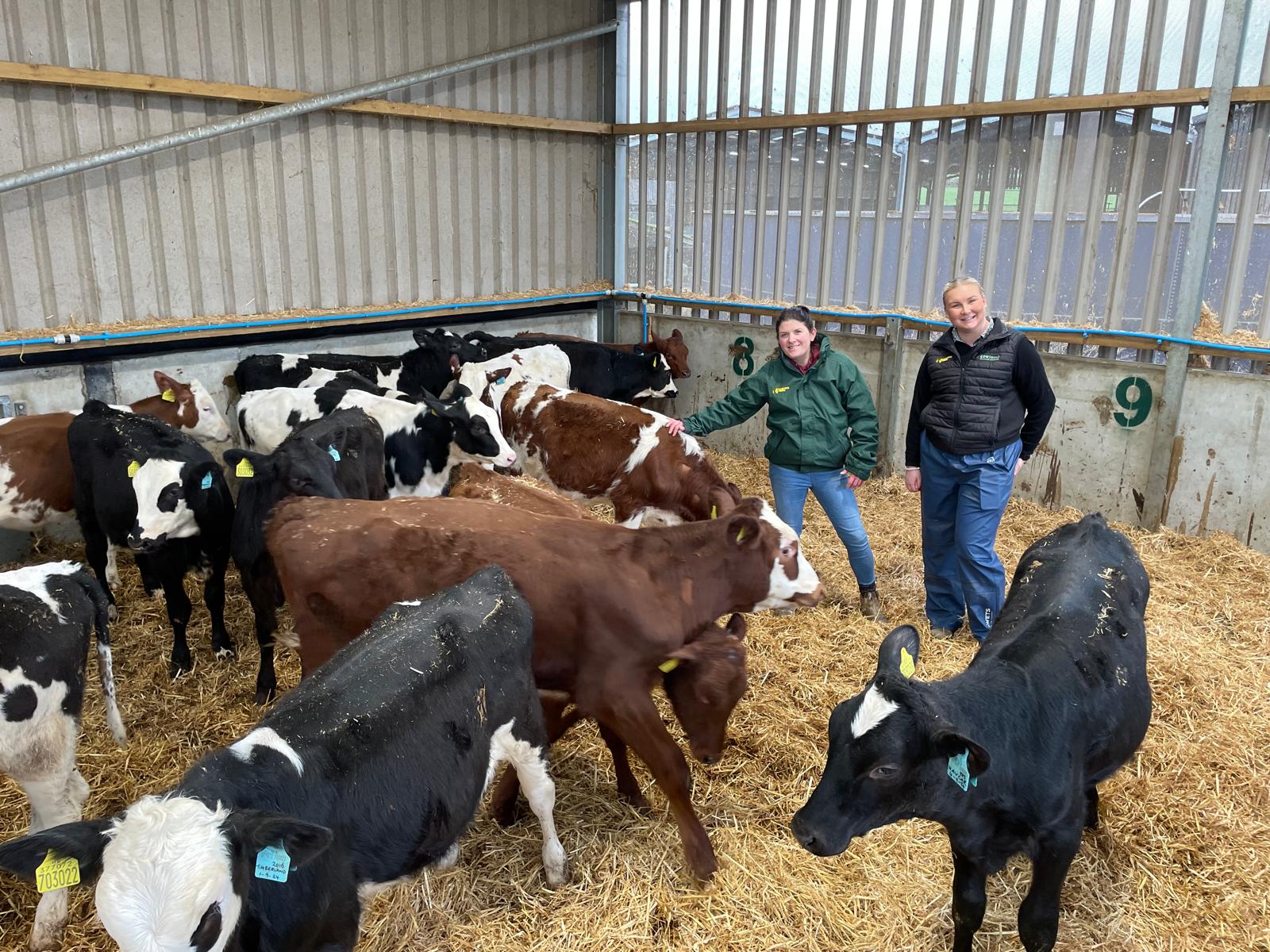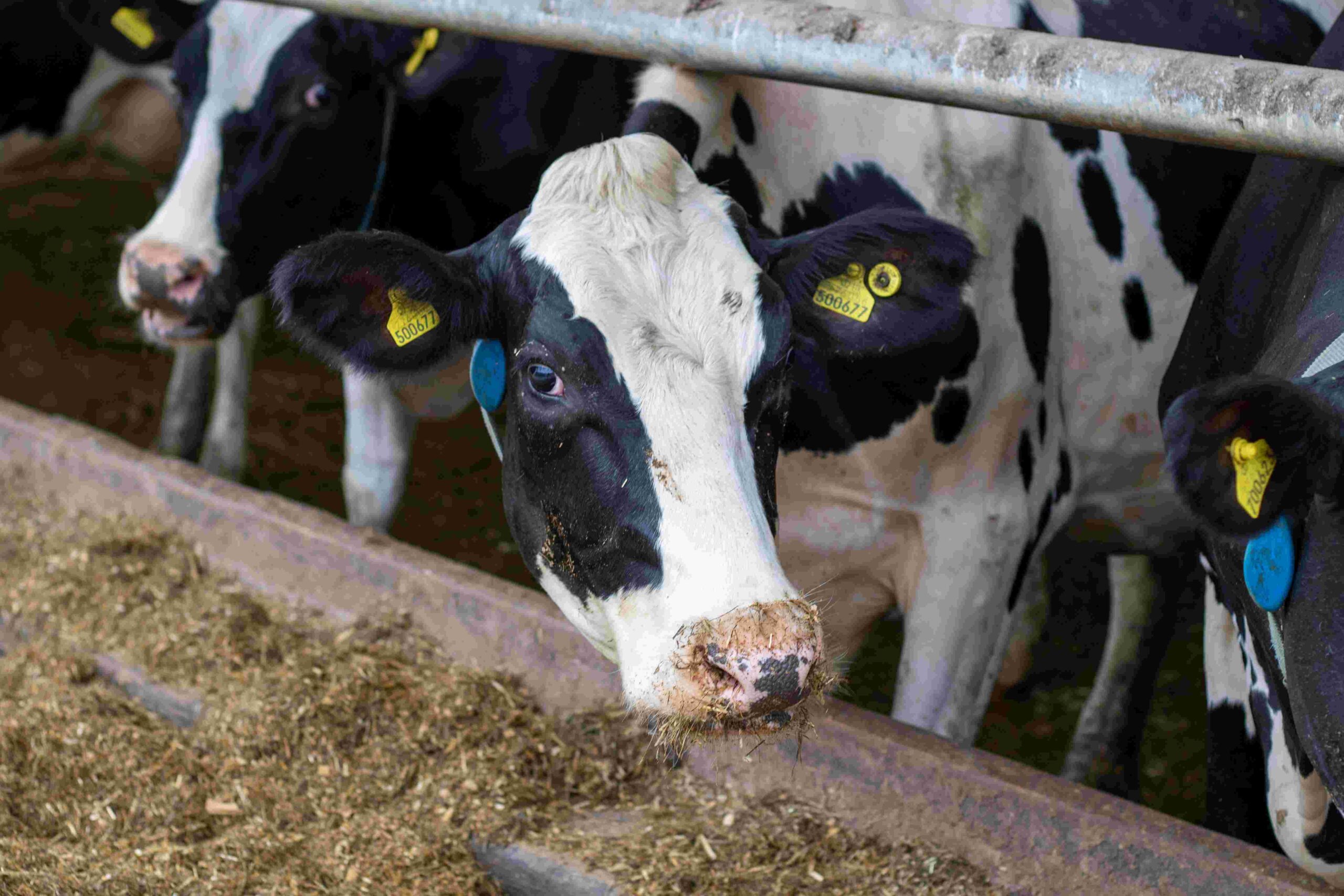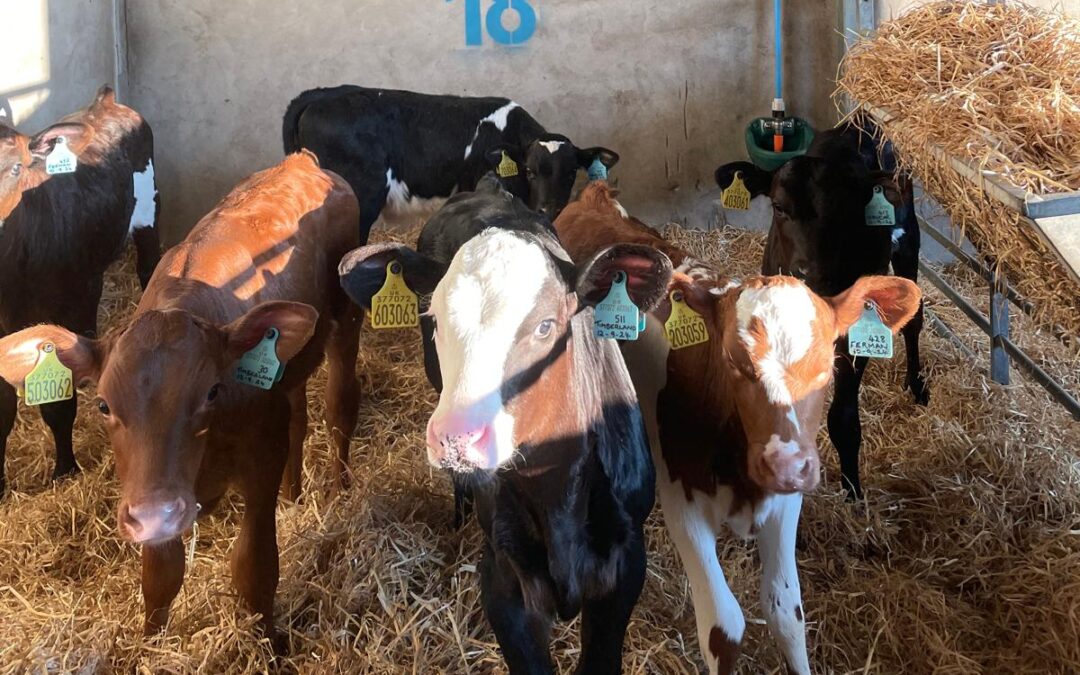Does increasing milk intake from six litres to eight litres daily have a positive effect on calf health? One farm in North Devon gave it a go

Kat and Steve Pomeroy embarked on a mission to revolutionise their calf-rearing practices. Their primary goal was to produce stronger, healthier calves, with robust immune systems. They hoped this would lead to improved growth rates, bigger heifers at insemination, and lower mortality.
“Ideally, we would like heifers to reach 85% of mature bodyweight and yield in first lactation. We are currently achieving this, but as we push for 9,500 litres next season, we can’t expect the heifers to do this independently. We must play our part in setting up that future dairy cow, starting with the growth and development from day one in the calf shed,” says Kat, who milks 330 cows alongside her husband Steve at Wedfield Farm, Putford.
Last year, most calves doubled their birthweight by weaning at 11 weeks, achieving an average daily liveweight gain (DLWG) of 0.7kg. However, Kat recognised the potential for further improvement.
The gold standard of 1kg of DLWG served as a benchmark and highlighted opportunities to optimise calf growth and development.
Colostrum Management
Kat aims to feed calves at least three litres (L), if not more, of clean, quality colostrum (measuring 24% or above on a Brix refractometer) as soon as possible after birth. If the colostrum does not make the grade, a replacement feed of SCCL colostrum (always tubed) is given.
A second feed of transition milk totalling 3L is fed 12 hours later. This is sourced fresh from the parlour and must also measure 24%.
On day two, calves move onto 3L of milk replacer, mixed at 150g to 850ml of water, to make 1L of milk. By day 8, they will reach 8L/day.
Calf Health
Since implementing these changes, Kat has observed significant improvements in calf health.
She says that this year’s calves appeared more energetic, maintained a fuller body condition for longer periods, exhibited better bodyweight distribution, and had a shiny coat.“We still had pneumonia, which we do vaccinate for, but we believe the additional 2L of milk provided calves with extra energy to withstand fluctuating temperatures and combat infections,” says Kat.
To further enhance calf health, they have adopted a proactive treatment approach.
“Any calf exhibiting symptoms is immediately treated,” Kat explains.
Despite increased treatment frequency, she says they have used less medication overall. “This highlights the positive impact of improved nutrition on overall calf resilience,” she adds.
Concentrate Intake
Despite feeding more milk, concentrate intake increased.
Calves were weaned gradually over three weeks, which helped because taking the milk away too quickly will dent the calf’s growth.
By the end of the second week of weaning, calves were eating over 2kg/head/day and then over 3kg of cake once weaned. Water intake also went up. For every 1kg of concentrate, calves drink 2L of water on top of their milk allocation. Calves must have access to clean, fresh water to ruminate efficiently.
Calf Weights

Results (see table 1) show feeding an extra 2L of milk has improved overall calf health and concentrate intake at weaning by 1kg/head/day.
This means the Pomeroys are on track to hit 1kg of DLWG next season.
| Feed Rate | 6L | 8L |
| Average weaning weights (% of bodyweight) | 235% | 283% |
| Number of calves that failed to double their bodyweight | 7 | 0 |
| Number of calves that tripled their bodyweight | 5 | 6 (including twins) |
| Number of calves that quadrupled their bodyweight | 0 | 2 (set of twins) |
| Mortality | 1.2% | 0% |
| Treatments (navel infections and pneumonia) | 38 | 30 |
| Concentrate intake at weaning | 2kg | 3kg |
table 1
Farm Facts:
- Milking 330 ProCROSS cows, to reach 400 by autumn 2025
- Supplying Saputo-Cathedral City Cheese
- Averaging 8,750 litres at 4.33% butterfat and 3.6% protein, aiming for 9,500 litresby autumn 2025
- Heifers calving at 23 months, aiming for 8,100 litres in first lactation
- Milking through a 32:32 parlour twice a day
- Autumn-block calving.






